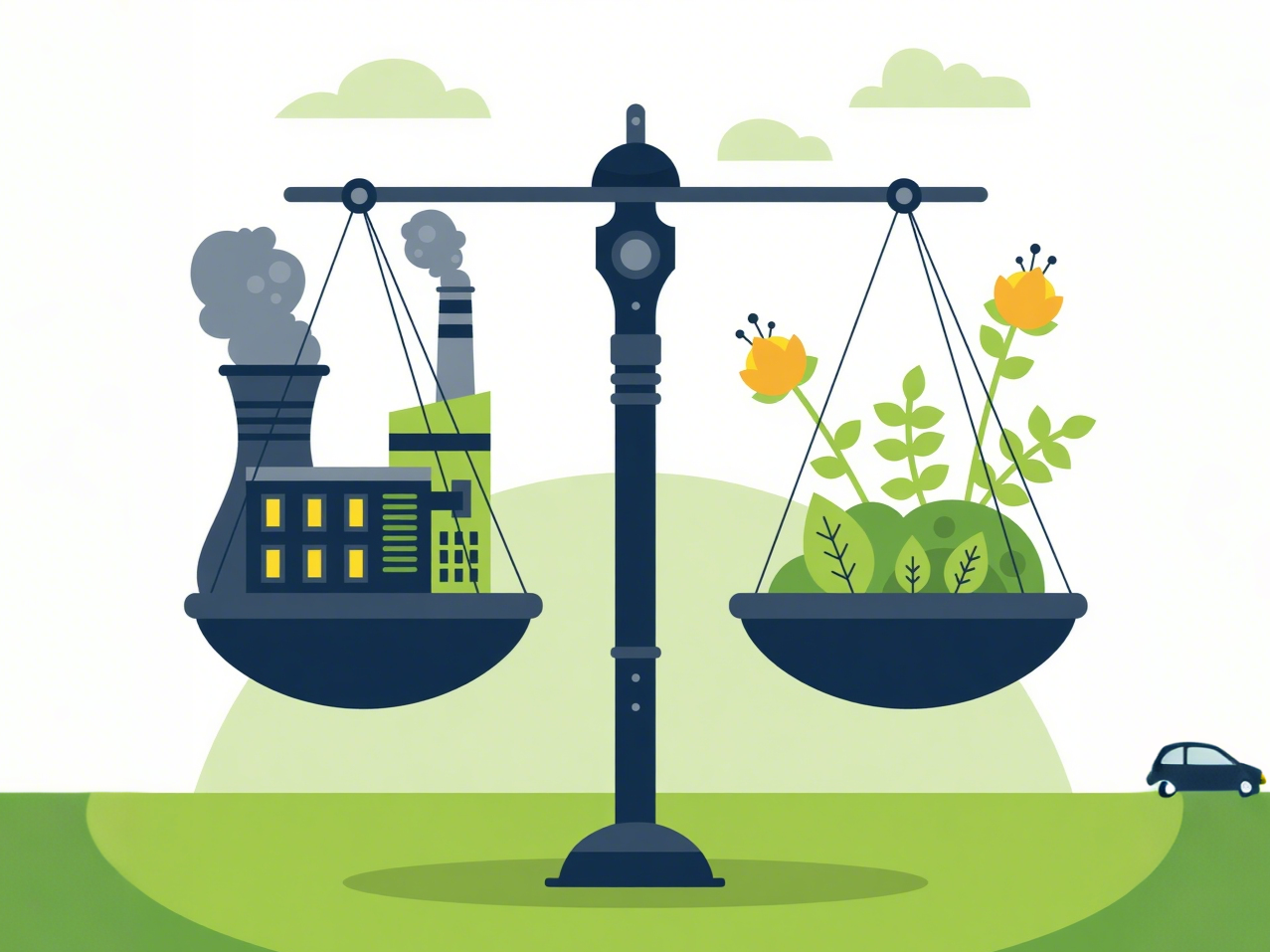How to Measure Success in Sustainable Procurement
16 Jul 2025
Table of Contents
What does success look like in sustainable procurement? For many companies, the answer is no longer just about ticking the ESG compliance box. Today, sustainable procurement has evolved into a strategic imperative—one that balances environmental responsibility, social impact, and long-term business resilience.
More than a trend, sustainable procurement is reshaping how organizations source, collaborate, and measure value across the supply chain. From selecting suppliers with strong sustainability practices to reducing carbon footprints and ensuring ethical labor standards, the scope has broadened—and so has the pressure to demonstrate impact.
But how do you know if your sustainable sourcing efforts are working? This is where defining success becomes critical. Companies must move beyond ambition and focus on clear, measurable outcomes. That means setting tangible sustainability goals and tracking progress through key performance indicators (KPIs), such as CO₂ reduction, supplier ESG scores, or diversity in supplier base.
In this article, we explore how leading organizations are measuring success in sustainable procurement initiatives—what metrics they track, the tools they use, and how those insights are driving both sustainability and competitive advantage.

Understanding Sustainable Procurement
Sustainable procurement integrates sustainability into every step of the purchasing process. It blends environmental, social, and economic considerations. This holistic approach helps organizations align their procurement with broader sustainability goals.
The benefits of sustainable procurement extend beyond compliance. Businesses can improve their brand reputation and meet consumer demands for greener products. It supports the transition to a circular economy, focusing on resource reuse and recycling.
Key aspects of sustainable procurement include:
· Environmental protection
· Social equity
· Economic viability
Procurement teams play a vital role in this process. By understanding these principles, they can drive significant change. Partnering with suppliers and engaging stakeholders ensure the long-term success of sustainable procurement initiatives.
Setting Goals and KPIs for Sustainable Procurement
Setting clear goals is crucial for sustainable procurement success. These goals must align with the organization's overall sustainability strategy. KPIs help track progress, offering measurable insights into performance.
To effectively develop KPIs, consider the following areas:
· Carbon footprint reduction
· Supplier sustainability ratings
· Waste minimization
Defining these metrics allows procurement teams to gauge improvements. Each KPI should relate back to overarching sustainability objectives. This alignment ensures consistent progress towards desired outcomes.
Organizational context and industry standards influence KPI selection. Customizing KPIs to fit these specific needs maximizes their impact. Continuous evaluation of KPIs ensures their relevance as sustainability practices evolve.
Involving stakeholders in goal-setting can foster commitment. This engagement promotes accountability and strengthens the drive for achieving sustainability targets. As organizations adapt to changes, their KPIs should evolve, too, to reflect new challenges and opportunities.
Key Metrics to Measure Sustainable Procurement Success
Measuring sustainable procurement success involves a blend of quantitative and qualitative metrics. Each metric offers a unique view into the effectiveness of procurement strategies. Implementing these metrics can guide continuous improvement efforts.
1.Environmental Metrics
Environmental impact is a primary focus. Key metrics include:
· Carbon emissions reduction
· Resource and energy efficiency
These metrics help reduce the environmental footprint of procurement activities. Organizations that excel in these areas often see significant cost savings.
2.Social Metrics
Social responsibility is equally important. Metrics could involve:
· Supplier diversity
· Fair labor practices
Ensuring fair practices encourages ethical sourcing and supports community development. Social metrics highlight commitment to corporate social responsibility.
3.Economic Metrics
Economic performance rounds out the evaluation. Consider metrics like:
· Cost savings from resource efficiency
· Supplier relationship effectiveness
Economic measures ensure that sustainability efforts are fiscally sound. They also demonstrate the tangible benefits of sustainable practices.
Combining these metrics provides a comprehensive overview. They reveal how well sustainability goals are being met. An integrated approach offers a full picture of procurement performance.

Tools and Methods for Tracking Progress
Tracking progress in sustainable procurement requires leveraging the right tools. Advanced technology can enhance accuracy and efficiency in data monitoring. This ensures that sustainability goals are systematically met.
Technology Tools
Several tools can support tracking efforts:
· Blockchain for supply chain transparency
· AI for data analysis
· Life Cycle Assessment (LCA) tools
These technologies offer detailed insights into supply chain dynamics. They help identify areas for improvement and ensure accountability.
Methodologies
Effective methodologies complement these tools. A robust approach may include:
· Regular supplier audits
· Sustainability performance reviews
These methods provide critical checkpoints. They ensure suppliers adhere to agreed-upon standards and sustainability practices.
Combining technology with structured methodologies offers a powerful framework. It drives efficiency and clarity in sustainable procurement efforts. A well-integrated system can significantly enhance supply chain sustainability.
Supplier Engagement and Collaboration
Engaging suppliers is crucial for sustainable procurement success. Strong relationships lead to better alignment in sustainability goals. This results in improved environmental and social impacts across the supply chain.
Collaboration Strategies
To enhance supplier collaboration, consider the following:
· Regular communication to discuss sustainability initiatives
· Joint development of sustainability programs
· Sharing best practices and resources
These strategies promote mutual growth and understanding. They facilitate transparent dialogue and foster innovation in sourcing practices.
Building trust with suppliers enhances compliance with sustainability standards. It encourages them to adopt eco-friendly practices. Successful supplier engagement is a key driver of a sustainable supply chain. It ensures that sustainability objectives are consistently met.
Reporting, Communication, and Continuous Improvement
Effective reporting is essential to demonstrate sustainable procurement achievements. Regular reports highlight progress against set goals and KPIs. These reports offer insights into areas needing improvement.
Key Communication Practices
Engaging internal and external stakeholders requires clear communication. Practices to enhance communication include:
· Sharing success stories and milestones
· Providing transparent and factual updates
· Encouraging feedback from stakeholders
These practices build trust and foster a collaborative environment. Transparent communication also supports brand reputation enhancement.
Continuous improvement in sustainable procurement is vital. Organizations should regularly review their strategies and adapt to new challenges. This ensures they remain aligned with evolving sustainability priorities. Regular evaluations and stakeholder feedback loops help in refining procurement practices. By doing so, businesses can achieve their sustainability goals more effectively.
Case Studies and Best Practices
Learning from industry leaders provides valuable lessons in sustainable procurement. Case studies offer real-world examples of effective strategies. These insights can guide organizations in improving their own procurement practices.
Notable Best Practices
Organizations can adopt several best practices, such as:
· Implementing supplier sustainability assessments
· Engaging in partnerships for resource sharing
· Leveraging technology to enhance traceability
These practices lead to improved sustainability outcomes. They also encourage innovation within the supply chain.
Continuous exploration of case studies helps businesses stay informed. They illustrate how forward-thinking companies successfully integrate sustainability into their operations. These examples can inspire others to adopt similar approaches, enhancing overall industry standards.
Conclusion: Driving Value Through Sustainable Procurement
Embracing sustainable procurement not only benefits the environment. It enhances organizational resilience and competitive edge. Through responsible sourcing, businesses can meet rising consumer demands.
Establishing clear metrics and goals is critical. These elements guide sustainable procurement efforts effectively. They also help organizations track progress and adjust strategies as needed.
Collaborative partnerships and continuous improvement are essential. By engaging suppliers and stakeholders, organizations foster a sustainable supply chain. Such engagement drives innovation and aligns with broader sustainability objectives, creating lasting value.
